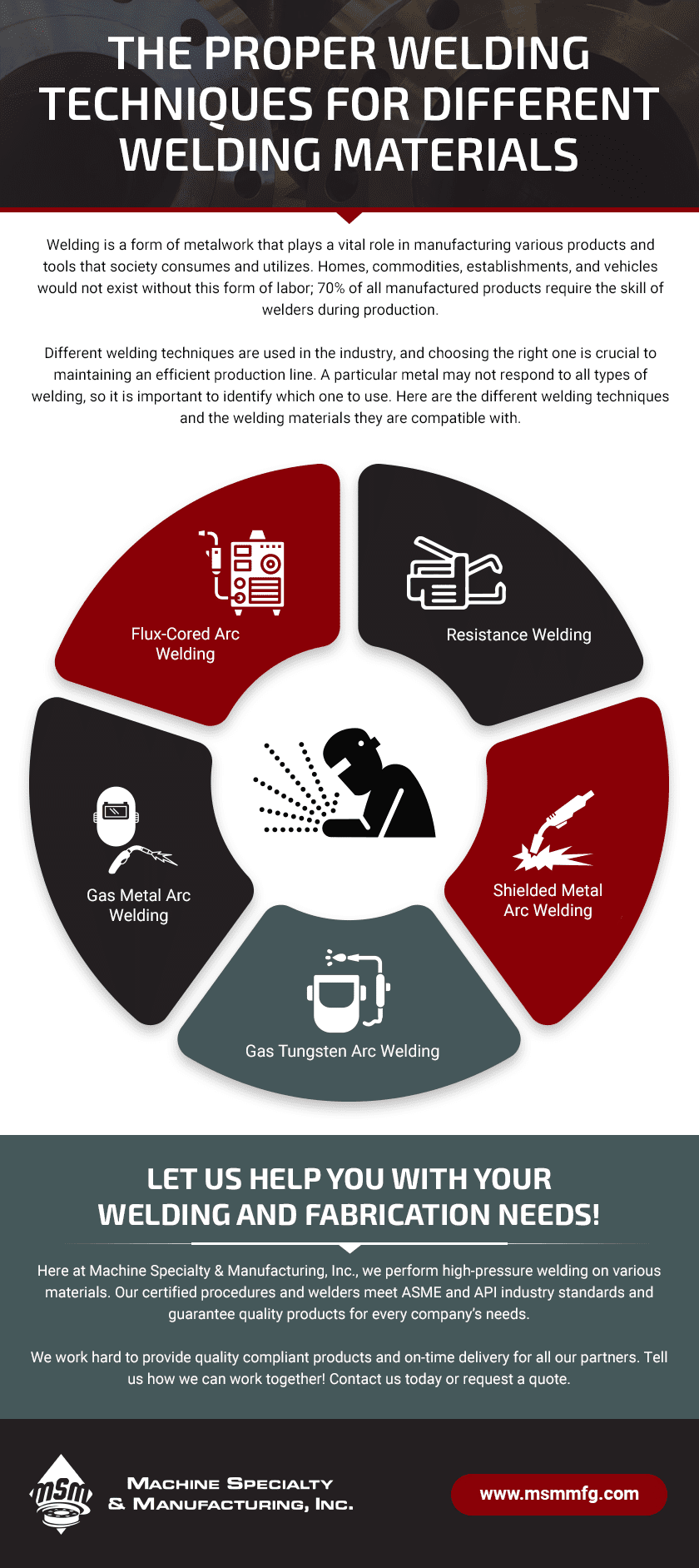Welding is a form of metalwork that plays a vital role in manufacturing various products and tools that society consumes and utilizes. Homes, commodities, establishments, and vehicles would not exist without this form of labor; 70% of all manufactured products require the skill of welders during production.
Different welding techniques are used in the industry, and choosing the right one is crucial to maintaining an efficient production line. A particular metal may not respond to all types of welding, so it is important to identify which one to use. Here are the different welding techniques and the welding materials they are compatible with.
Resistance Welding
Resistance welding is also called electric resistance welding. This technique joins metal by applying pressure and sending a powerful electric current through the metal to heat up and melt the welding joint and forge them together. Then, the electrode extracts heat from the molten area and forms a weld nugget.
Resistance welding is cost-effective and does not require other materials. It has many types — spot welding, butt welding, and seam welding. In addition, this form is suited for welding materials such as steel or stainless steel.
Shielded Metal Arc Welding
This welding technique is a fusion welding process that uses a consumable and flux-coated electrode. With a shielded metal arc welding technique, the flux on the electrode is melted and surfaces on top of the molten weld pool. This simple and affordable process requires only a constant current power source, an electrode, an electrode holder, and a ground clamp.
The shielded metal arc welding applies materials like steel, stainless steel, and aluminum, which do not require much effort to be welded.
Gas Tungsten Arc Welding
The gas tungsten arc welding technique is widely used for welding similar or dissimilar metals because it yields a sound output with good weld quality. This technique uses an external gas supply and non-consumable tungsten electrodes to form an arc that melts the filler wire to fuse and weld the metal.
The materials gas tungsten arc welding applies to are steel, stainless steel, aluminum titanium, cast iron, and magnesium alloy.
Gas Metal Arc Welding
Gas metal arc welding is also a fusion welding process that uses an electrical arc as the source of energy to cause a metal fusion. For this method, the electrode being is also the filler metal consumable. This method also uses an external shielding gas to protect the molten weld.
Gas metal arc welding applies to steel, stainless steel, and aluminum.
Flux-Cored Arc Welding
The flux-cored arc welding process is also a fusion welding technique. Only this time, the welding process involves using a continuously fed consumable wire electrode packed with flux to create an electrical arc that produces the heat needed to melt the metals.
A flux-cored arc welding technique can be used on welding materials like steel and stainless steel.
Let Us Help You With Your Welding and Fabrication Needs!
Here at Machine Specialty & Manufacturing, Inc., we perform high-pressure welding on various materials. Our certified procedures and welders meet ASME and API industry standards and guarantee quality products for every company’s needs.
We work hard to provide quality compliant products and on-time delivery for all our partners. Tell us how we can work together! Contact us today or request a quote.
